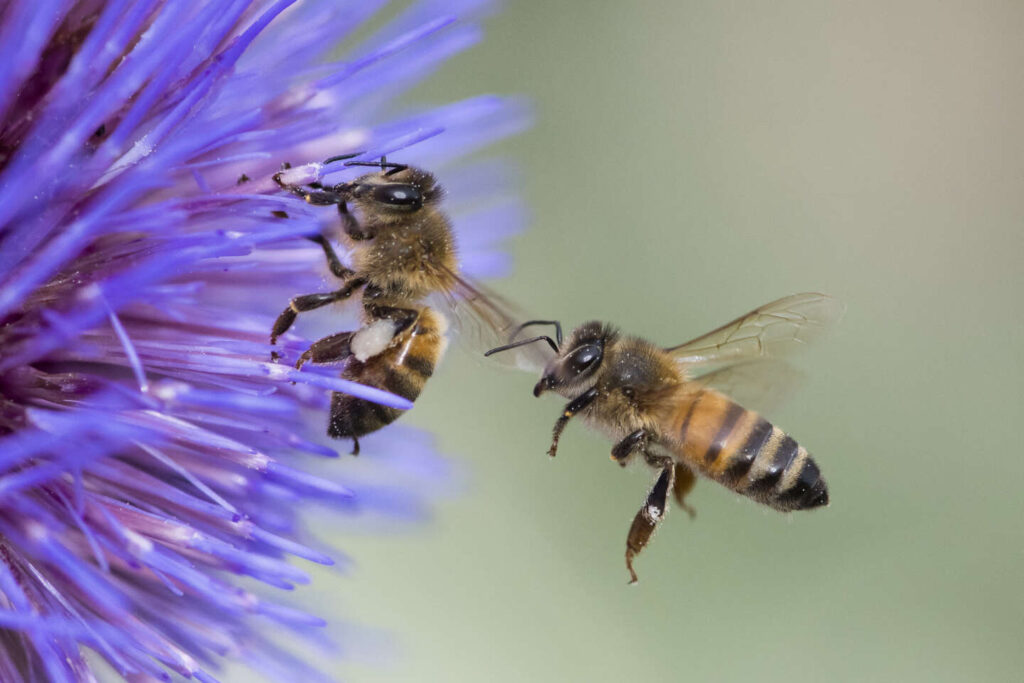Why do bears hibernate in winter ?

As the winter landscape is enveloped in a glistening veil of snow, an extraordinary spectacle unfolds within the animal kingdom: the phenomenon of bear hibernation. Envision a colossal grizzly nestled snugly within its den, seemingly immersed in an eternal slumber. But what propels these magnificent creatures into such a profound state of dormancy? Embark with us on an expedition into the captivating realm of bear hibernation, where the intricacies of survival instincts intertwine with biological marvels.
The Biology of Hibernation
At the core of bear hibernation lies a meticulously calibrated biological mechanism. Unlike their counterparts such as groundhogs and certain rodents, bears enter a state referred to as torpor. During torpor, their heart rate decelerates, metabolism diminishes, and body temperature experiences a slight decrease. This physiological adaptation enables them to conserve vital energy reserves during the extended winter period, characterized by scant food resources.
But what drives bears to hibernate? The rationale stems from the unforgiving realities of winter survival. With plummeting temperatures and diminishing food supplies, bears confront a daunting challenge: how to endure until the advent of spring. Hibernation emerges as their ingenious solution—a survival strategy meticulously honed over millennia of evolutionary refinement.
Preparing for Winter
As autumn fades into winter, bears embark on a crucial mission: bulking up for hibernation. During the summer and fall, they gorge themselves on a rich bounty of fruits, nuts, and protein-rich meals, packing on the pounds for the lean months ahead. This period of hyperphagia, or increased eating, is essential for building up fat reserves, which serve as their primary source of energy during hibernation.
But it’s not just about storing calories. Bears also undergo a series of physiological changes to prepare for hibernation. Their bodies become more efficient at storing fat, while their metabolism slows down to conserve energy. Additionally, bears may seek out suitable den sites, from natural caves to hollow trees, where they’ll spend the winter in relative seclusion.
The Hibernation Experience
Once winter descends in full force, bears retreat to their dens to begin their hibernation journey. Inside their cozy sanctuaries, they enter a state of deep sleep punctuated by occasional bouts of wakefulness. Despite popular belief, bears don’t truly “sleep” throughout the entire hibernation period. Instead, they enter a state of torpor, where their metabolic rate slows dramatically, allowing them to conserve energy.
But make no mistake: hibernation is not a blissful slumber. Bears must contend with challenges such as muscle atrophy, bone density loss, and even the risk of dehydration. To mitigate these risks, their bodies have evolved remarkable adaptations. For example, bears recycle urea, a waste product, to maintain nitrogen balance and reduce the need to urinate—a crucial advantage when water sources are scarce.
Emerging from Hibernation
With the lengthening of days and the gentle ascent of temperatures, bears slowly stir from their winter repose. This reawakening, termed “arousal,” signifies the conclusion of hibernation and the onset of a fresh season. Yet, the transition is not swift. It may span days or even weeks for bears to fully emerge from their torpor-induced state, a period characterized by a lingering sense of grogginess and disorientation.
Once awake, bears face the daunting task of rebuilding their strength after months of inactivity. They’ll venture out of their dens in search of food, their once-sluggish metabolism kicking into high gear to fuel their recovery. For many bears, this post-hibernation period is a critical time, as they must replenish their depleted fat reserves to survive until food becomes abundant once more.
The Conservation Connection
Beyond their intrinsic fascination, bear hibernation holds significant implications for conservation efforts. As apex predators, bears play a vital role in maintaining healthy ecosystems. By understanding their hibernation behavior, researchers can better protect critical habitats and ensure the long-term survival of bear populations.
Moreover, human activities pose unique challenges to bear hibernation. Habitat loss, climate change, and human-wildlife conflicts threaten to disrupt this delicate balance, putting bears at risk. Conservation initiatives aimed at mitigating these threats are essential for preserving bear hibernation habitats and ensuring the survival of these iconic creatures for generations to come.
Conclusion
In the quiet depths of winter, bear hibernation offers a glimpse into the wonders of the natural world. It’s a testament to the resilience and adaptability of these remarkable creatures, whose survival hinges on their ability to navigate the challenges of the changing seasons. As we marvel at the sight of a hibernating bear, let us also remember our role as stewards of the earth, entrusted with safeguarding the habitats that sustain these majestic animals. For in the intricate tapestry of life, every creature, from the smallest insect to the mightiest bear, plays a vital part in the symphony of nature.


